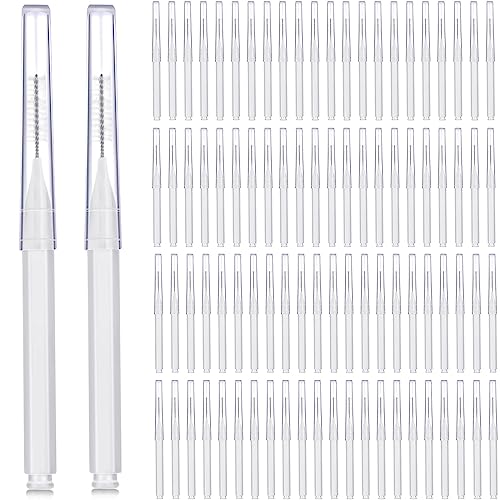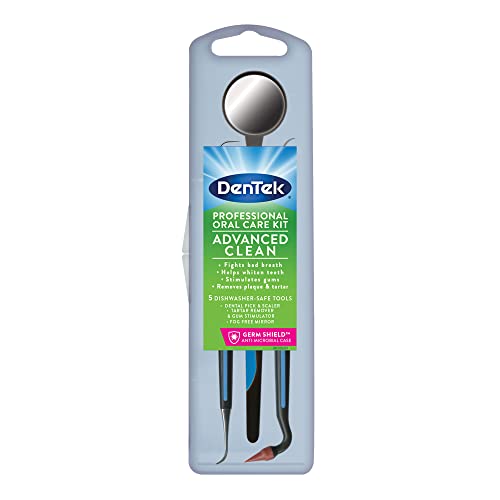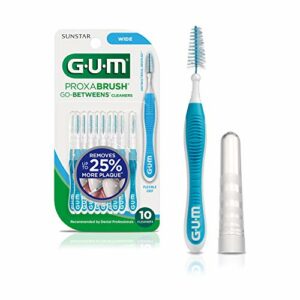Dear readers,
We understand that maintaining good oral hygiene can sometimes be overwhelming. We’ve all been there – standing in front of a myriad of dental tools at the store, unsure of which one to choose. Today, we want to alleviate some of that confusion by discussing two popular options: the dental pick and the interdental brush. In this post, we will explore the purpose and benefits of each tool, helping you make an informed decision about which one may be best suited for your oral health needs. Let’s dive in and discover the world of dental care together.
Achieve a Cleaner, Healthier Smile with the Bestsellers in Dental Hygiene Tools
What are Dental Picks?
Dental picks, also known as interdental cleaners or interdental brushes, are essential tools used for oral hygiene. They are designed to clean the spaces between teeth and remove plaque and food particles that regular brushing and flossing may miss.
How are Dental Picks Used?
To use a dental pick effectively, follow these simple steps:
- Choose the right size: Dental picks come in various sizes to accommodate different spaces between teeth. It’s important to select a pick that fits comfortably between your teeth without causing discomfort or damage.
- Insert gently: Insert the dental pick into the space between your teeth, applying a gentle back and forth motion. Be careful not to force the pick or push it too deep, as this can damage your gums.
- Clean thoroughly: As you move the dental pick back and forth, make sure to clean all sides of the teeth and remove any visible plaque or debris. Take your time and be thorough in your cleaning.
- Rinse and repeat: After using the dental pick, rinse your mouth with water to remove any loosened debris. Repeat the process for each space between your teeth, ensuring a comprehensive clean.
Benefits of Dental Picks
Using dental picks as part of your oral hygiene routine can bring several benefits:
- Effective plaque removal: Dental picks are highly effective at removing plaque and food particles from hard-to-reach areas between teeth, reducing the risk of cavities and gum disease.
- Gum health improvement: By regularly cleaning between your teeth with dental picks, you can help prevent gum inflammation and promote healthier gums.
- Fresher breath: Cleaning between teeth with dental picks helps eliminate the buildup of bacteria that can cause bad breath, leaving your mouth feeling fresh and clean.
Dental Picks vs. Traditional Flossing
While traditional flossing is an important part of oral hygiene, dental picks offer some unique advantages:
- Convenience: Dental picks are easier to handle and maneuver than traditional floss, making them a more convenient option for those who struggle with flossing.
- Accessibility: Dental picks can reach areas that traditional floss may have difficulty accessing, ensuring a more thorough clean.
- Comfort: For individuals with sensitive gums or dental work, dental picks can offer a gentler alternative to traditional flossing.
Benefits of Interdental Brushes
Interdental brushes are an effective tool for maintaining oral hygiene and preventing dental problems. Here are some key benefits of using interdental brushes:
- Removes plaque and food particles: Interdental brushes are designed to reach the spaces between your teeth that regular brushing can’t. They effectively remove plaque and food particles that may be missed by traditional toothbrushes.
- Prevents gum disease: The spaces between your teeth are prone to plaque buildup, which can lead to gum disease if left untreated. Interdental brushes help to clean these areas, reducing the risk of gum disease and maintaining healthy gums.
- Reduces bad breath: Food particles trapped between your teeth can contribute to bad breath. By using interdental brushes, you can remove these particles and improve your breath freshness.
- Promotes healthier gums: Interdental brushes stimulate the gums and promote blood circulation, which can lead to healthier gum tissue. Healthy gums are essential for overall oral health and preventing gum problems.
- Prevents tooth decay: Regular use of interdental brushes helps to prevent tooth decay by removing plaque and bacteria from hard-to-reach areas. This reduces the risk of cavities and preserves the integrity of your teeth.
How Interdental Brushes Differ from Dental Picks
While interdental brushes and dental picks may seem similar, they have some distinct differences. Here’s a comparison to help you understand how they differ:
| Interdental Brushes | Dental Picks |
|---|---|
| Small, tapered bristles that resemble tiny brushes | Thin, pointed or flat metal or plastic tips |
| Designed to fit between teeth to remove plaque and debris | Primarily used for removing larger food particles stuck between teeth |
| Come in various sizes to accommodate different gaps between teeth | Usually one-size-fits-all |
| Effective for cleaning hard-to-reach areas and tight spaces | Best for removing stubborn food particles and larger debris |
| Can be used with or without toothpaste | Often used in conjunction with toothpicks or floss |
| Suitable for people with braces, bridges, and other dental appliances | Not recommended for those with dental appliances |
Choosing the Right Interdental Brush
When it comes to choosing the right interdental brush, consider the following factors:
- Size: Select an interdental brush that fits comfortably between your teeth without feeling too tight or loose. It should be able to reach all the spaces in your mouth.
- Bristle Type: Interdental brushes come in various bristle types, such as nylon or rubber. Choose one that suits your preference and needs.
- Handle Design: Look for an interdental brush with a comfortable handle that allows for easy maneuverability and control.
- Ease of Use: Consider how easy the brush is to use. Some interdental brushes have angled heads, making it easier to reach the back teeth.
- Consult Your Dentist: If you are unsure about which interdental brush is best for you, consult your dentist or dental hygienist. They can provide professional guidance based on your specific oral health needs.
In conclusion, interdental brushes are a valuable addition to your oral hygiene routine. They offer numerous benefits, such as removing plaque, preventing gum disease, reducing bad breath, promoting healthier gums, and preventing tooth decay. By understanding the differences between interdental brushes and dental picks and choosing the right brush for your needs, you can ensure optimal oral health.
Comparing Effectiveness
Keeping our teeth clean and free from plaque and debris is essential for maintaining good oral hygiene. While regular brushing is important, it is equally vital to clean between our teeth where a toothbrush cannot reach. Dental picks and interdental brushes are two popular tools that assist in removing plaque and debris from these hard-to-reach areas. In this blog section, we will compare the effectiveness of dental picks and interdental brushes, helping you make an informed decision about which tool to incorporate into your oral care routine.
Dental Picks
Dental picks, also known as toothpicks or dental sticks, have been used for centuries to clean between teeth. Here are some key points to consider about their effectiveness:
- Ease of use: Dental picks are simple to use and require no special instructions. Just insert the pick between your teeth and gently scrape away plaque and debris.
- Flexibility: Dental picks are available in different shapes and sizes, allowing you to choose one that suits your specific needs. Some picks have a pointed end, while others have a flat or triangular tip.
- Accessibility: Dental picks are widely available and can be easily purchased at grocery stores, pharmacies, and online.
- Portability: Dental picks are small and compact, making them convenient to carry around. You can have one in your pocket or purse, ensuring you can clean between your teeth wherever you go.
- Cost: Dental picks are generally inexpensive, making them an affordable option for maintaining oral hygiene.
Interdental Brushes
Interdental brushes, also referred to as proxy brushes or interproximal brushes, have gained popularity in recent years as an alternative to dental picks. Here are some key points to consider about their effectiveness:
- Variety of sizes: Interdental brushes come in various sizes to fit different interdental spaces, ensuring a customized fit for optimal cleaning.
- Ease of use: Interdental brushes are designed with small bristles that can reach between teeth and massage the gums gently. They are typically used with a back-and-forth motion to remove plaque and debris effectively.
- Efficiency: Interdental brushes are highly effective at removing plaque from larger interdental spaces or spaces with irregular shapes.
- Gentle on gums: The soft bristles of interdental brushes are less likely to cause gum irritation or bleeding when used correctly.
- Versatility: Interdental brushes can be used with or without toothpaste, allowing you to choose the method that works best for you.
- Hygienic: Many interdental brushes come with protective caps or cases, keeping them clean and preventing damage to the bristles.
The Verdict
Choosing between dental picks and interdental brushes ultimately depends on your specific needs and preferences. Here are some key points to consider when making your decision:
- Dental picks may be more suitable for individuals with smaller interdental spaces or those who prefer a simpler tool.
- Interdental brushes may be more suitable for individuals with larger interdental spaces or those who want a more thorough cleaning experience.
- It is important to consult with your dentist or dental hygienist to determine the most appropriate tool for your oral health needs.
Remember, regardless of which tool you choose, cleaning between your teeth regularly is vital for maintaining good oral hygiene. Incorporating either dental picks or interdental brushes into your daily routine will help reduce plaque buildup and prevent gum disease.
Note: For a visual comparison of dental picks and interdental brushes, please refer to the table below:
| Dental Picks | Interdental Brushes | |
|---|---|---|
| Ease of use | Simple | Requires some practice |
| Variety of sizes | Limited | Wide range available |
| Efficiency | Effective | Highly effective for larger spaces |
| Gentle on gums | May cause irritation if used aggressively | Less likely to cause irritation |
| Portability | Highly portable | Portable, but slightly larger in size |
| Cost | Inexpensive | Slightly more expensive |
| Accessibility | Widely available | Widely available |
In conclusion, both dental picks and interdental brushes are effective tools for cleaning between teeth. Consider your specific needs and preferences to choose the tool that suits you best. Remember to consult with your dental professional for personalized advice on maintaining oral hygiene.
Considering Individual Needs
When it comes to maintaining good oral hygiene, regular brushing and flossing are essential. However, for thorough cleaning between teeth, using additional tools like dental picks or interdental brushes can be highly beneficial. But how do you decide which one to choose? In this blog section, we will discuss the factors to consider when making this decision, taking into account personal preferences, dental health, and ease of use.
Personal Preferences
It’s important to consider your personal preferences when choosing between a dental pick and an interdental brush. Some individuals may find one option more comfortable or easier to use than the other. Here are a few points to consider:
- Comfort: Dental picks are typically smaller and more compact, making them easier to maneuver. On the other hand, interdental brushes come in various sizes, allowing you to find the one that fits your teeth gaps best.
- Grip: Dental picks often have handles that provide a firm grip, making them suitable for individuals with limited dexterity. Interdental brushes also come with handles, but some people may find the grip less secure.
- Sensation: Some individuals may have a preference for the sensation of using one tool over the other. It’s recommended to try both options and see which one feels more comfortable for you.
Dental Health
Understanding your dental health needs can help determine whether a dental pick or an interdental brush is more suitable. Here are some factors to consider:
- Tooth Spacing: If you have tight teeth gaps, an interdental brush with thinner bristles may be more effective. Alternatively, if you have wider gaps, a dental pick with a pointed tip can help reach the areas more precisely.
- Gum Sensitivity: If you have sensitive gums, a dental pick with soft or flexible rubber tips may be gentler and less likely to cause discomfort. Interdental brushes with soft bristles can also provide a gentle cleaning experience.
- Existing Dental Conditions: Individuals with dental restorations or orthodontic appliances might find that interdental brushes are better suited to clean around these structures effectively.
Ease of Use
Considering the ease of use is crucial in maintaining consistent oral hygiene habits. Here are a few points to consider:
- Portability: Dental picks are often more compact, making them easier to carry in your bag or pocket. Interdental brushes can also be portable, but their larger sizes may require more space.
- Cleaning Experience: Some individuals may find it easier to navigate the spaces between their teeth with a dental pick, while others may prefer the bristles of an interdental brush for a more thorough cleaning experience.
- Maintenance: Dental picks are usually reusable and can be cleaned with ease. Interdental brushes, however, may need more thorough cleaning and replacement after a certain period of use.
Choosing the Right Tool for You
Ultimately, the choice between a dental pick and an interdental brush depends on your individual needs and preferences. To help you make an informed decision, here is a comparison table highlighting the key points:
| Dental Pick | Interdental Brush | |
|---|---|---|
| Comfort | Small and compact | Various sizes available |
| Grip | Firm grip | Secure grip might vary |
| Tooth Spacing | Suitable for wider gaps | Suitable for tight gaps |
| Gum Sensitivity | Rubber tips for gentle cleaning | Soft bristles for gentle cleaning |
| Portability | Highly portable | Portable, but larger sizes may require space |
| Maintenance | Reusable and easy to clean | Regular cleaning and replacement required |
Remember, it’s always best to consult with your dentist or dental hygienist to determine which tool is most suitable for your individual needs. They can provide personalized recommendations based on your dental health and any specific concerns you may have.
In conclusion, both dental picks and interdental brushes can be effective tools for cleaning between teeth. By considering your personal preferences, dental health, and ease of use, you can make an informed decision that will contribute to your overall oral hygiene routine.
Choosing the Right Tool for Your Oral Health Needs
In conclusion, after carefully comparing the dental pick and interdental brush, we have examined their pros and cons. Both tools have their advantages and can effectively remove plaque and food particles. However, it is essential to consider individual needs and preferences when choosing between them.
For those with tight spaces between their teeth, interdental brushes may be more suitable as they can reach deeper into the gaps. On the other hand, dental picks can be helpful for targeting specific areas or hard-to-reach spots.
Ultimately, the choice between a dental pick and an interdental brush depends on personal comfort, oral health condition, and the specific requirements of each individual. It is advisable to consult with a dental professional to determine the most suitable option for your unique dental needs. Let’s prioritize our oral health by making an informed decision and maintaining regular oral hygiene practices.























